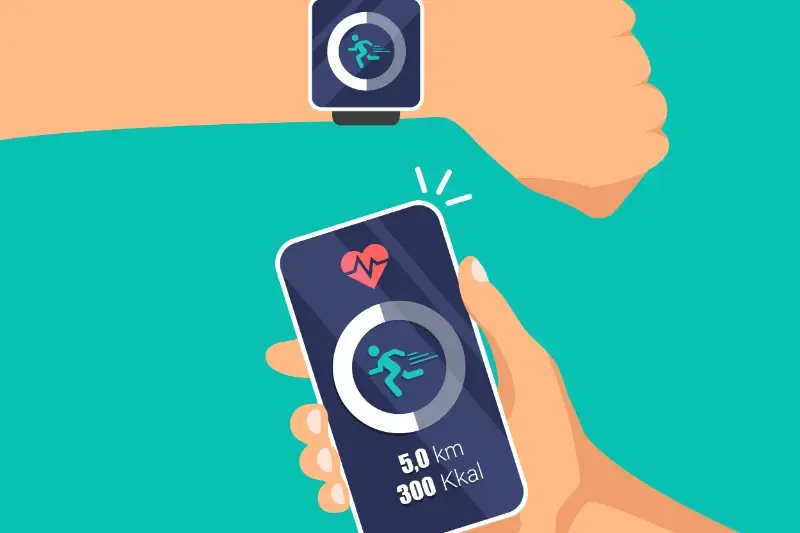The Hidden Truth About App Maintenance (and Why It Matters More Than Development)
Here's something that might surprise you: most mobile app budgets are spent on the wrong thing. Companies pour 80% of their resources into development and leave just 20% for everything that happens after launch. That's completely backwards. The real work—the stuff that determines whether your app succeeds or dies—begins the moment users start downloading it.
After working with hundreds of apps over the years, I've watched this pattern repeat itself again and again. Teams celebrate their launch day like it's the finish line, when really it's just the starting pistol. Your app is now a living thing that needs constant care, feeding, and attention. Without ongoing support, even the most beautifully crafted mobile app will start breaking down within weeks.
The development reality is that building an app is like having a baby—the hard work starts after it arrives, not before
Most business owners have no idea what they're signing up for when they commission an app. They think they're buying a finished product, but what they're actually getting is a responsibility that will need daily attention for years to come. The apps that thrive aren't necessarily the ones with the biggest launch budgets—they're the ones with the smartest maintenance strategies.
What Really Happens After Your App Goes Live
Picture this: you've just launched your app and you're feeling pretty chuffed. Downloads are trickling in, maybe even a few positive reviews. You might think the hard work is done—but here's where things get interesting. The real journey is just beginning.
Within the first 24 hours, you'll start seeing crash reports. Not because your app is broken (well, hopefully not), but because real users do things you never tested for. They'll use your app on devices you forgot existed, with settings you didn't consider, in ways that would make your head spin.
The First Week Reality Check
Your support inbox will start filling up with questions you never anticipated. Users will report bugs that somehow slipped through testing—and trust me, they always do. Meanwhile, you'll be frantically checking analytics, trying to work out why people are abandoning your app at specific points.
The app stores will also start their own review process. Apple might flag something they missed initially; Google Play could change their policies overnight. Your beautiful five-star rating? It can drop to three stars faster than you can say "user feedback."
The Ongoing Reality
This isn't a sprint anymore—it's a marathon. Every day brings new challenges: server costs, security updates, compatibility issues with new operating systems. Your app becomes like a digital pet that needs constant attention, feeding, and care.
The True Cost of Keeping Apps Running
Here's something that might surprise you—the money you spend building your mobile app is just the beginning. I've worked with clients who thought they were done spending once we handed over their finished app, and let me tell you, that conversation never goes well. The reality is that ongoing support costs typically run between 15-20% of your original development budget every year.
These aren't optional extras we're talking about. Your app needs regular updates to work with new operating system versions, security patches to keep user data safe, and bug fixes when things inevitably break. Then there's hosting costs, third-party service fees, and the dreaded app store compliance updates that pop up without warning.
What You'll Pay for Each Year
- Server hosting and database management
- Security updates and patches
- Operating system compatibility updates
- Third-party service subscriptions
- App store developer fees
- Performance monitoring tools
- Bug fixes and minor improvements
The apps that survive long-term are the ones with realistic budgets for ongoing maintenance. You can't build something once and expect it to run forever—that's just not how mobile app development works in practice.
Set aside 20% of your development budget for first-year maintenance costs, then plan for similar amounts annually. This isn't pessimism, it's planning for success.
Why Most Apps Fail Within Their First Year
Here's something that might surprise you—around 80% of mobile apps get deleted within just three months of being downloaded. That's not a typo. Most apps don't even make it past their first season, let alone their first year.
The problem isn't usually the initial idea or even the development quality. I've seen brilliantly coded apps with stunning designs crash and burn faster than you can say "user retention." What kills them is what happens after launch—or more accurately, what doesn't happen.
The Post-Launch Reality Check
When apps fail quickly, it's almost always because the team thought their job was done once they hit the app store. They built something great, launched it, then sat back waiting for downloads to roll in. But users today expect apps to work perfectly on their specific device, with their particular usage patterns, in their unique environment.
That Android phone running an older version of the OS? Your app needs to work there too. That iPhone user who's updated to the latest iOS on day one? Better make sure nothing's broken. When apps can't handle this reality—when they crash, run slowly, or feel outdated—users don't give second chances.
The Maintenance Gap
Most failed apps share one common trait: they stopped evolving. The teams behind them treated launch as the finish line rather than the starting gun. Without regular updates, bug fixes, and improvements, even the best apps become yesterday's news faster than you'd think.
The Daily Tasks That Keep Apps Alive
Right, let's talk about what actually happens behind the scenes every single day to keep your mobile app running smoothly. This isn't glamorous work—it's the digital equivalent of maintaining a car. You wouldn't expect your car to run forever without oil changes, would you?
Every morning, someone needs to check your app's performance metrics. Are people able to log in? Is the payment system working? Are there any crashes happening? These checks aren't optional; they're part of the ongoing support that keeps users happy. Then there's monitoring server performance, checking for security vulnerabilities, and making sure your app works with the latest operating system updates.
We spend about 30% of our time each week just keeping existing apps healthy and updated—that's before we even think about new features
The reality is that mobile app maintenance never stops. Apple and Google release updates constantly, which means your app needs testing and often fixing. User reports come in daily—some are bugs, others are feature requests. Database backups need running, security patches need applying, and performance optimisation never ends. This is the development reality that most people don't see, but it's what separates successful apps from abandoned ones.
How User Expectations Change Everything
Here's something that catches many app owners off guard—user expectations don't stay the same. What impressed users when your app first launched won't impress them six months later. I've watched perfectly good apps lose their entire user base simply because they didn't keep up with what people expected.
Users are constantly downloading new apps, seeing fresh designs, and experiencing better features. If your app feels outdated compared to what they're using elsewhere, they'll delete it without thinking twice. This isn't just about major updates either—it's about the small things that make an app feel current and responsive.
What Users Expect to Change Over Time
- Faster loading times as internet speeds improve
- More intuitive navigation as design standards evolve
- Better personalisation based on their usage patterns
- Integration with new services and platforms they're using
- Security features that match current best practices
The tricky part is that users don't tell you about these changing expectations—they just stop using your app. Regular user research, feedback collection, and staying aware of industry trends becomes part of your maintenance routine. It's not enough to fix bugs; you need to evolve your app to meet tomorrow's expectations, not yesterday's.
Planning for Long-Term Success Before You Build
Here's something I wish more clients understood when they first walk through our doors—the decisions you make before writing a single line of code will determine whether your mobile app thrives or becomes another casualty statistic. I've watched brilliant app concepts crumble within months because nobody thought about what happens after launch day.
The smart money isn't spent on fancy animations or cutting-edge features; it's invested in building foundations that can handle real-world pressure. This means choosing technologies that won't become obsolete next year, designing systems that can scale when your user base grows, and most importantly, budgeting for ongoing support from day one. Too many people treat maintenance like an afterthought when it should be the main event.
Always allocate at least 20% of your development budget specifically for post-launch maintenance and updates in the first year—this isn't optional spending, it's survival money.
Building With Tomorrow in Mind
The development reality is harsh but simple: apps that survive plan for change before it happens. This means documenting everything properly, writing clean code that future developers can understand, and creating update processes that don't require rebuilding from scratch. When you're planning your mobile app, think less about what users want today and more about what they'll expect tomorrow—because that's when you'll actually need to deliver it. Having a comprehensive mobile app strategy from the outset helps you anticipate these challenges and build sustainable solutions.
Common Mistakes That Kill Apps After Launch
I've watched countless apps launch with great fanfare only to disappear from app stores within months. The sad truth is that most of these failures could have been avoided if developers had just paid attention to what users were actually saying and doing.
The Big Three App Killers
From my experience, there are three mistakes that consistently destroy apps after launch. First, ignoring user feedback—I mean really ignoring it, not just collecting it and filing it away somewhere. Second, treating the app like it's finished once it hits the store. And third, failing to monitor performance issues that make users want to throw their phones across the room.
Here's what typically goes wrong in the first few months:
- Crash reports pile up whilst developers focus on new features
- User reviews mention the same problems repeatedly without any response
- Loading times get slower as more users join but nobody notices
- Security vulnerabilities go unpatched because "it's working fine"
- Compatibility issues emerge with new device updates
The Recovery Reality
Once users delete your app, getting them back is nearly impossible. App stores are flooded with alternatives, and people don't give second chances to apps that wasted their time. The window for fixing these issues is smaller than most people think—usually just a few weeks before users move on permanently. This is where choosing the right platform from the start can make all the difference in your ability to respond quickly to user needs.
Conclusion
Here's what I've learned after years of working with mobile app clients—the moment your app launches is when the real work begins. Not ends. Begins. Most people think they're crossing the finish line when they hit 'publish' in the app store, but what they're actually doing is stepping up to the starting blocks.
The mobile app world doesn't slow down for anyone. User expectations shift constantly, operating systems update without warning, and your competitors are always watching. That ongoing support we've talked about? It's not optional—it's what separates successful apps from the thousands that disappear into digital obscurity.
I've seen brilliant apps fail because their creators treated maintenance like an afterthought. And I've watched mediocre apps succeed because their teams understood that development reality: building an app is just the beginning of a much longer journey.
If you take one thing from this, make it this: budget for maintenance from day one. Plan for it. Expect it. Embrace it. Your future self (and your users) will thank you when your app is still thriving whilst others have long since been forgotten.
Share this
Subscribe To Our Blog
You May Also Like
These Related Stories

No-Code vs. Custom Development: The Honest Comparison

Mobile Health App Development: Navigating the Clinical-Technical Divide





